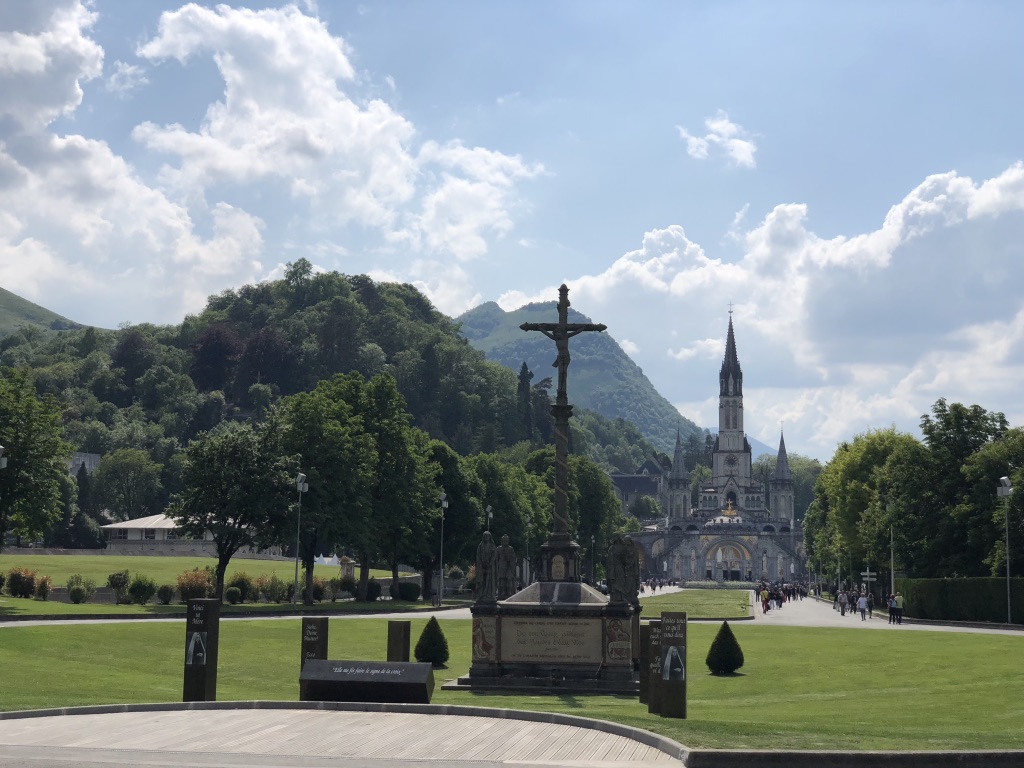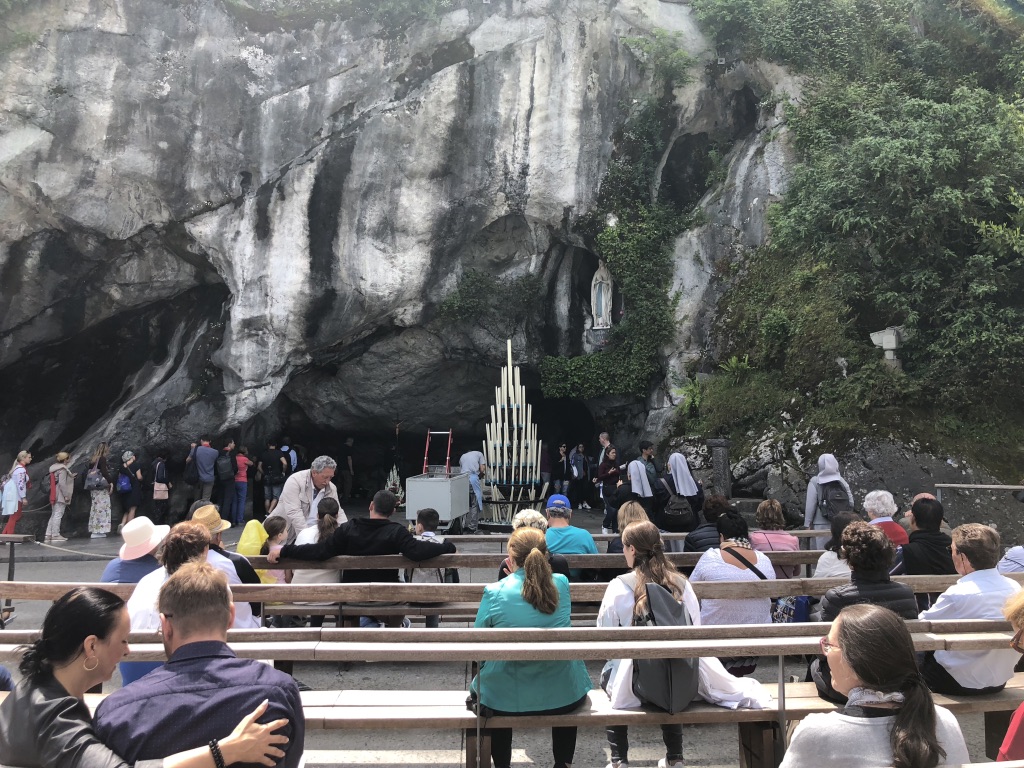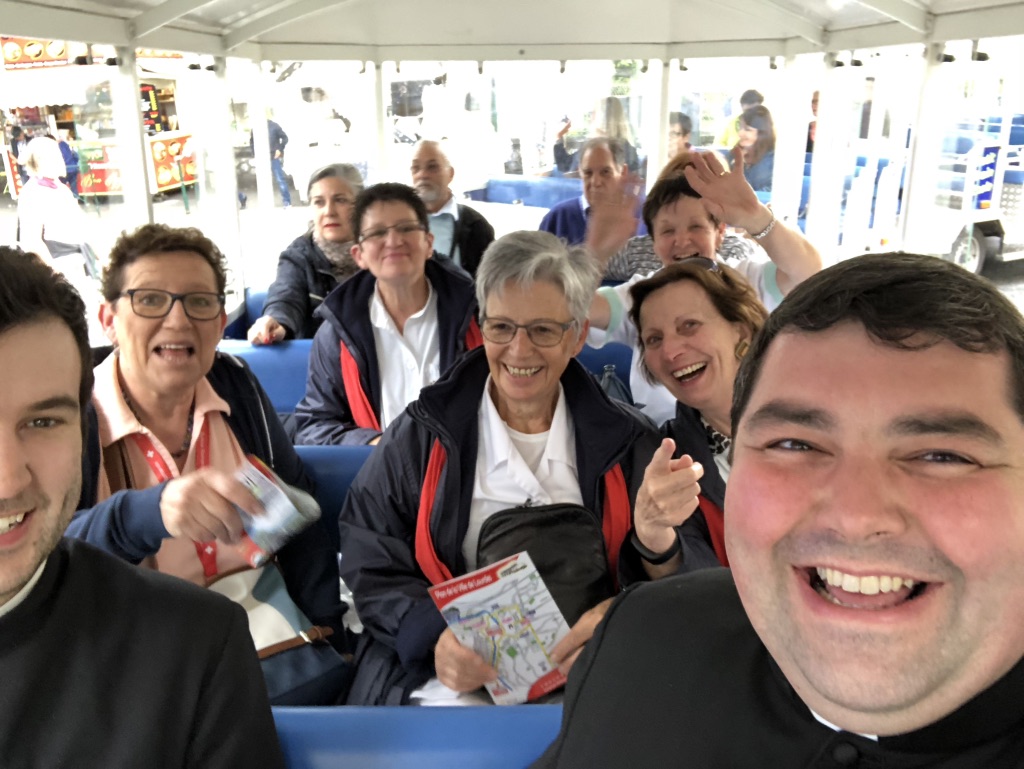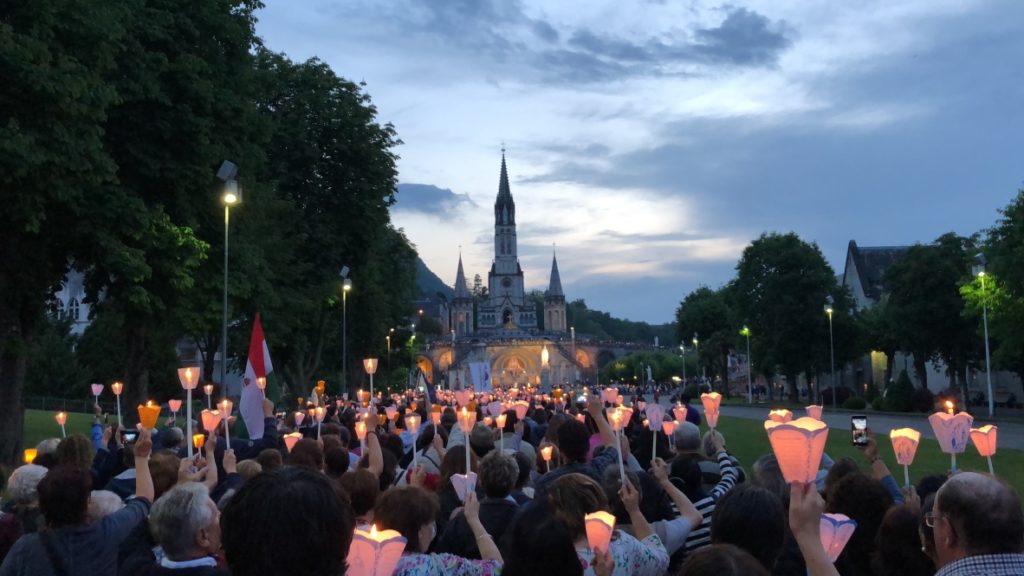This article was first published in the April 2020 copy of Ave Magazine – the magazine of The Society of Mary. It’s re-published here today as the relics of St. Bernadette arrive at the Immaculate Heart of Mary RC church in Hayes.
Lourdes has always been near the top of my list of places to visit. A special place that I had read about, heard people talk about and had seen in films and TV documentaries over many years. The barrier – always – was that when you start talking to people about Lourdes you’re told – quite clearly – that it is the Disney Land of the Catholic world. That simple description put me off for longer than it should. Finally, after a dear friend convinced me the time was right, we booked tickets (thank you Ryan Air) and an AirBnB (don’t book one at the top of the hill) and off we set.
They were right. We landed and it became apparent immediately that Lourdes is big business. Tours, busses, busy pilgrim groups, posters, noise, shops, noise, so many people. It was utterly overwhelming. The energy of the place is palpable and as we arrived at our apartment late at night there was a great sense of expectation and energy for our retreat. Exactly the same kind of energy and expectation that I had experienced as a child arriving at Pontins. This was hardly the right kind of spiritual preparation that the shrine deserved, and I went to sleep that night berating myself for this lack of decorum.

We woke the following day, both a little more collected in our thoughts as we put on our cassocks and prepared to walk down the hill to the shrine complex. All my fears were confirmed as we walked the mile or so through Lourdes, we passed shop after shop selling tacky, tawdry trinkets. Glow in the dark statues of Our Lady, glass statues filled with multi-coloured sand, rosaries with beads the size of tennis balls. We were, of course, above such things and kept our minds firmly on visiting the grotto where the story of Our Lady of Lourdes began.
Fighting our way through the crowds in the square in front of the basilica we made it to the grotto – well, we made it to the queue for the grotto. It remained out of site beyond a line of tourists – iPhones and selfie sticks out, gossiping and laughing as they waited to visit one of the most holy places in Western Europe.
Everything I had come to expect of the place was true. The noise, the tackiness, the tourists – all of it. But then, as the line started to enter the grotto a peculiar thing happened. The iPhones were put away, the selfie sticks collapsed. The gossiping stopped and a still calm surrounded us. We walked slowly through the grotto, our hands on the walls. Praying, smiling at others – slightly embarrassed by this public display of subdued prayer – and as we left the place we fell to our knees in the small outdoor chapel in front of the grotto. Nothing to say to one another, nothing to explain, just silence and prayer in this extraordinary place.

Later that day we visited the mill where St. Bernadette had lived with her family and spoke to her great-great-great-great (ish) nephew who smiled awkwardly at us as we asked what it was like being related to a saint. At the end of our tour we asked if we could pray at her bedside – he closed the museum and opened up the glass shutters protecting her bedroom and watched as we knelt at her bed and prayed the rosary exactly where she had.
Leaving the museum, again wrapped in our own silence and stillness we stopped at a shop selling antique medals and sifted through a basket full of old bits of tin. Pilgrim badges, saints, scapulars… we could find every saint except Bernadette. Finally, after spending the better part of twenty minutes searching this basket and spreading the medals out in the shop – we found the only two medals of St. Bernadette knelt in front of Our Lady. The shop owner had been watching us closely and as we discovered the medals, she could see the joy on our faces and refused to take payment – she then attached the medals to the rosaries we had just prayed with at St. Bernadette’s bedside.
We told her the story – she knew the family of old – and related just how unusual this was. The museum was never closed… it meant lost money! She asked where we were from and we told her our story, how we – as Anglicans – were visiting on pilgrimage and what a special time we were having. Caught up in our excitement and in this special moment she dragged us up the road to her friend’s shop which had just opened and had not yet been blessed by a Priest. We explained… we’re Anglicans, not Roman Catholics. She didn’t care and marched us into the shop, introduced us to her slightly shocked friend who then produced water and salt. Prayers were quickly found on the iPhone and my friend and I walked around the shop liberally sprinkling water and praying for blessing and protection. They were delighted and it attracted a small crowd who I’m sure then blessed the shop with their Visa cards.

Our pilgrimage continued to be marked by these special encounters. With other pilgrims, with Our Lady, with St. Bernadette and with the very special people who visit and make Lourdes what it is – because that is what Lourdes really is. It’s a place of connection that trades on the fact it’s an incredibly ‘thin place’. If you can work your way past the tacky shops, the crowds and the noise you can find true peace and through that peace you start to discover that the people around you are not tourists, but pilgrims on a different journey. That the noise is a joyful noise of prayer. That the tacky shops are… well, the tacky shops are tacky, but there is beauty there was well – not in the sand filled glass crosses – but in the people who run them, the encounters that happen in and around them and maybe, just maybe… you will get that glow in the dark statue of Our Lady and put it on your bookshelf for people to giggle at.

I can’t wait to return to Lourdes. To discover more about Our Lady and how she takes us to Christ through this noisy, tacky world.

